| Made by
Sineok Vlad
8m form
About Canada
• Canada is a country occupying most of northern North America, washed by the Atlantic Ocean on the east and the Pacific Ocean on the west and by the Arctic Ocean on north. It is the world's second largest country by total area .It’s borders with the United States to the south and northwest are the world's longest.
Information about Canada
• Capital
Ottawa
• Largest city
Toronto
• Official languages
English and French
• Recognised regional languagesInuktitut, Inuinnaqtun, Cree, Dëne Sųłiné, Gwich’in Inuvialuktun, Slavey and TłįchǫYatiì
• Demonym
Canadian
• Government
Federal parliamentary democracy and constitutional monarchy.
• Monarch Queen Elizabeth II
The first language-Inuktitut
• It is the name of some of the Inuit languages spoken in Canada. It is spoken in all areas north of the tree line, including parts of the provinces of Newfoundland and Labrador, Quebec, to some extent in northeastern Manitoba as well as the territories of Nunavut, the Northwest Territories, and traditionally on the Arctic Ocean coast of Yukon.
Inuinnaqtun
• It is an indigenous language of Canada. It is related very closely to Inuktitut, and some scholars believe that Inuinnaqtun is more appropriately classified as a dialect of Inuktitut. The governments of the Northwest Territories and Nunavut recognise Inuinnaqtun as an official language in addition to Inuktitut. The Nunavut recognized Inuinnaqtun as one of the official languages of Nunavut.It is written using the Latin alphabet.
Cree
• Cree
is one of the largest groups of First Nations. Aboriginals in North America, located mainly across Canada and historically in the United States from Minnesota westward .The Cree are generally divided into 8 major groups: Naskapi, Montagnais, Attikamekw, James Bay Cree, Moose Cree, Swampy Cree, Woods Cree and Plains Cree. However, among the Cree, they usually referred to themselves collectively as Nēhilawē
(those who speak our language); they called themselves "Cree" only when speaking English or French.
Dene Suline
• Dene Suline
(also Dëne Sųłiné
, Chipewyan
, Dene Suliné
, Dëne Suliné
, Dene Soun’liné
or just Dene
) is the language spoken by the Chipewyan people of central Canada. It is a part of the Athabaskan family and therefore related to the Navajo language. Dene Suline has over 11,000 speakers in Canada, mostly in Saskatchewan, Alberta and the Northwest Territories.
Dogrib
• Dogrib
(also Tłįchǫ Yatiì
, IPA: [tɬʰĩtʃʰõ jatʰîː]) is a Northern Athabaskan language spoken by the First Nations. Tłįchǫ people of the Canadian territory Northwest Territories. According to Statistics Canada in 2006, there were approximately 2,640 people who spoke Dogrib
Gwich’in
• The Gwich’in language
is the Athabaskan language of the Gwich’in indigenous people. It is also known in older or dialect-specific publications as Kutchin
, Takudh
, Tukudh
, or Loucheux
. In the Northwest Territories and Yukon of Canada, it is used principally in the towns of Inuvik, Aklavik, Fort McPherson, Old Crow, and Tsiigehtchic (formerly Arctic Red River). There are about 430 Gwich’in speakers in Canada out of a total Gwich'in population of 1,900. In Alaska, Gwich’in is spoken in Beaver, Circle, Fort Yukon, Chalkyitsik, Birch Creek, Arctic Village, Eagle, and Venetie, Alaska. About 300 out of a total Alaska Gwich’in population of 1,100 speak the language.
Slavey
• Slavey (English originally written Slavé, from the French, but since the word confuse with another word, Slave, it was decided to write Slavey) — the Indian language from the atabakskih language, common bird among people of Slavey living in the Northwest Territories in Canada, where it закреплён. To write the language used is either the Canadian Aboriginal letter or the Latin alphabet.
Inuvialuktun
Inuvialuktun
are three dialects of the language of the Inuit spoken in the northern Northwest Territories by those Canadian Inuit who call themselves Inuvialuit
.Inuvialuktun is an official language of the Northwest Territories and is written using the Roman alphabet, like all NWT official languages, and has no tradition of Inuktitut syllabics. However, the official understanding of Inuvialuktun is somewhat at variance to the way linguists understand it. Rather than a single dialect, Inuvialuktun is a politically motivated grouping of three quite distinct and separate dialects
Thanks


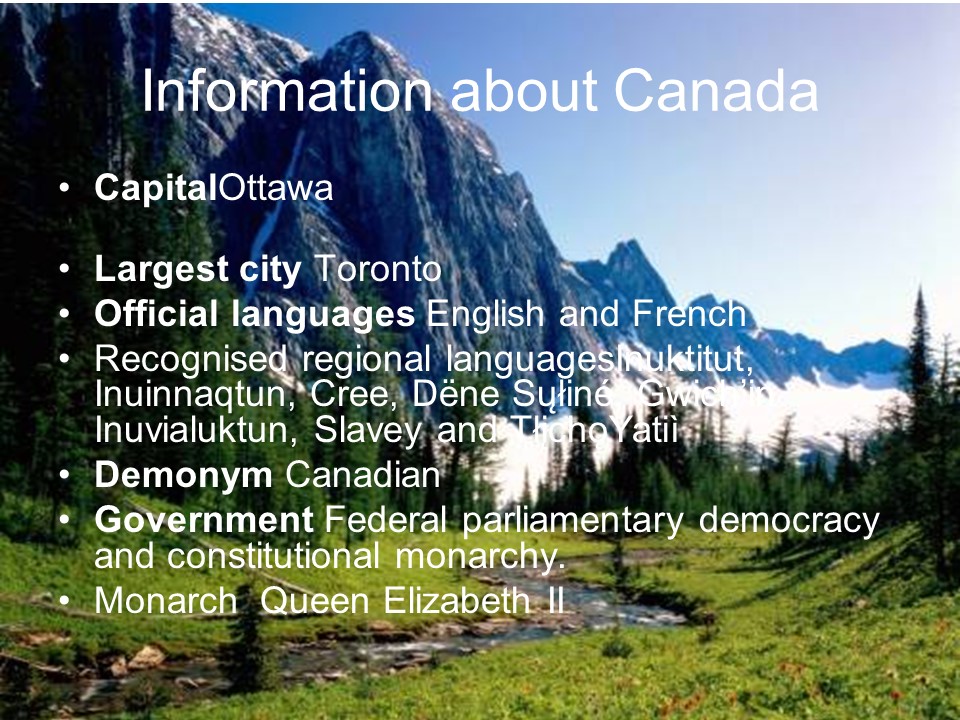

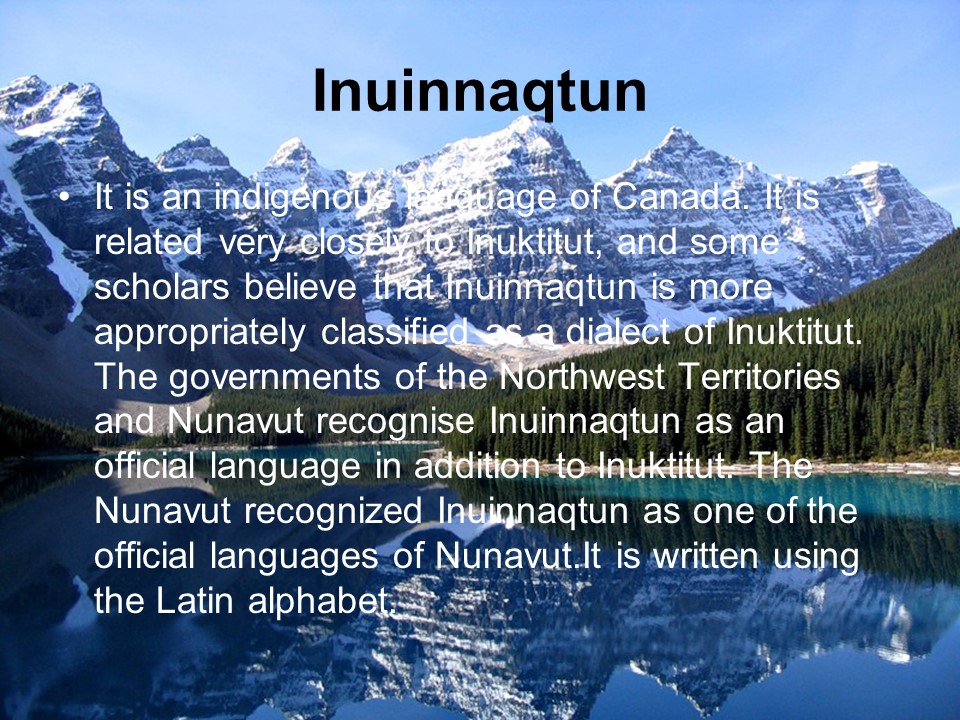

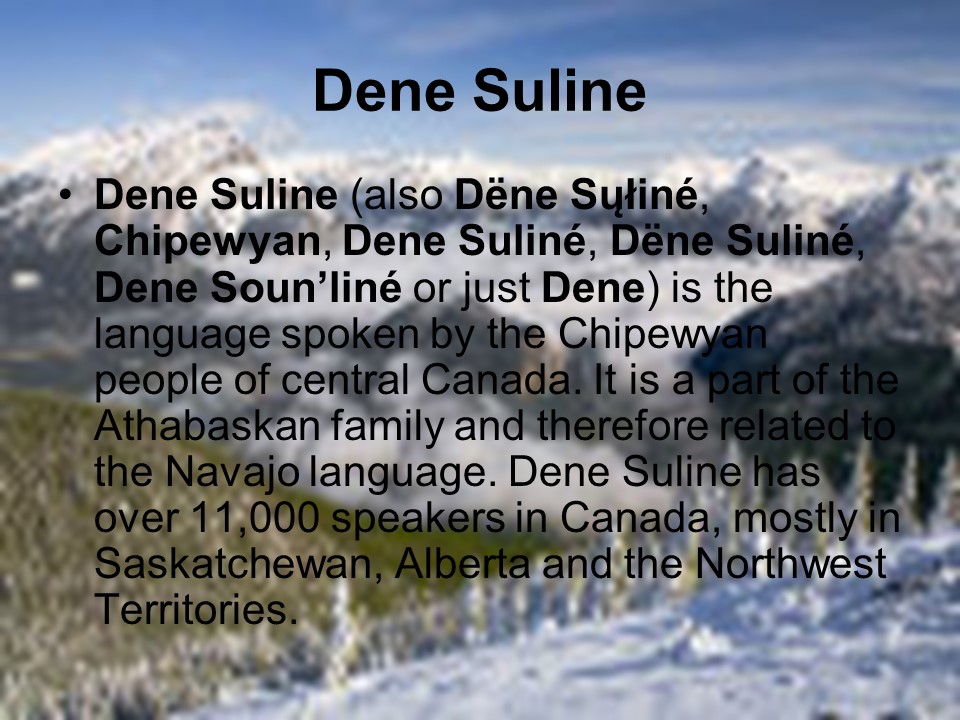

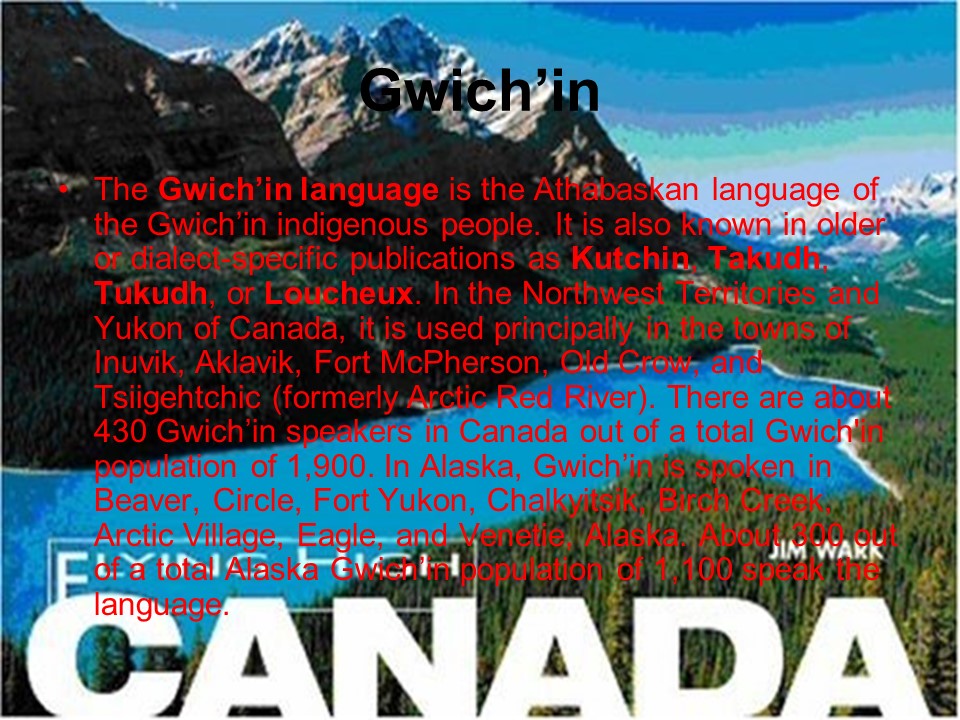

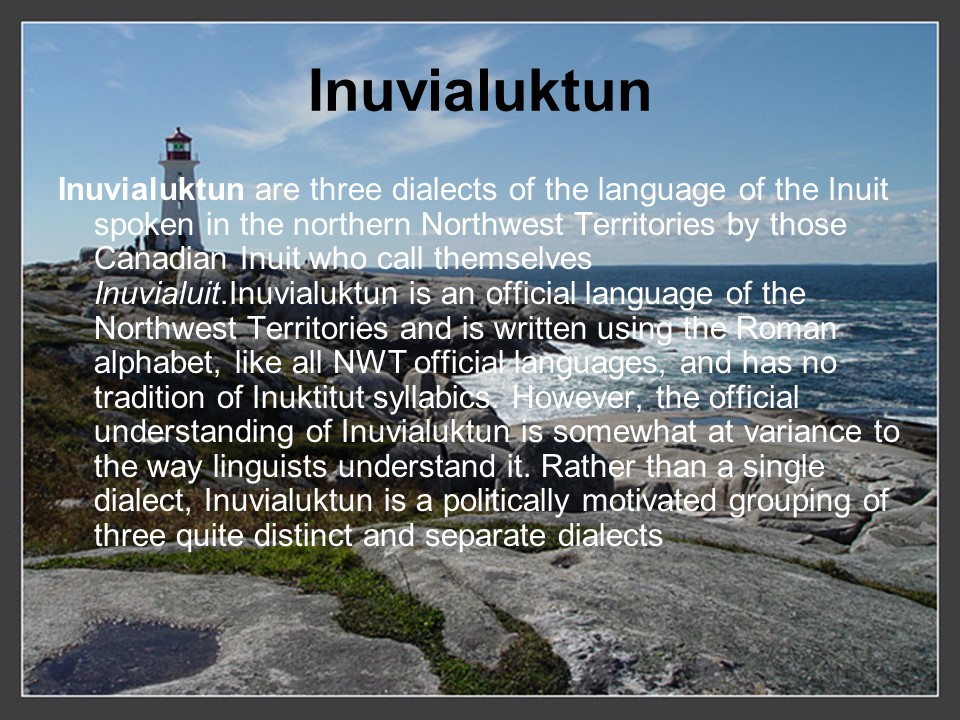
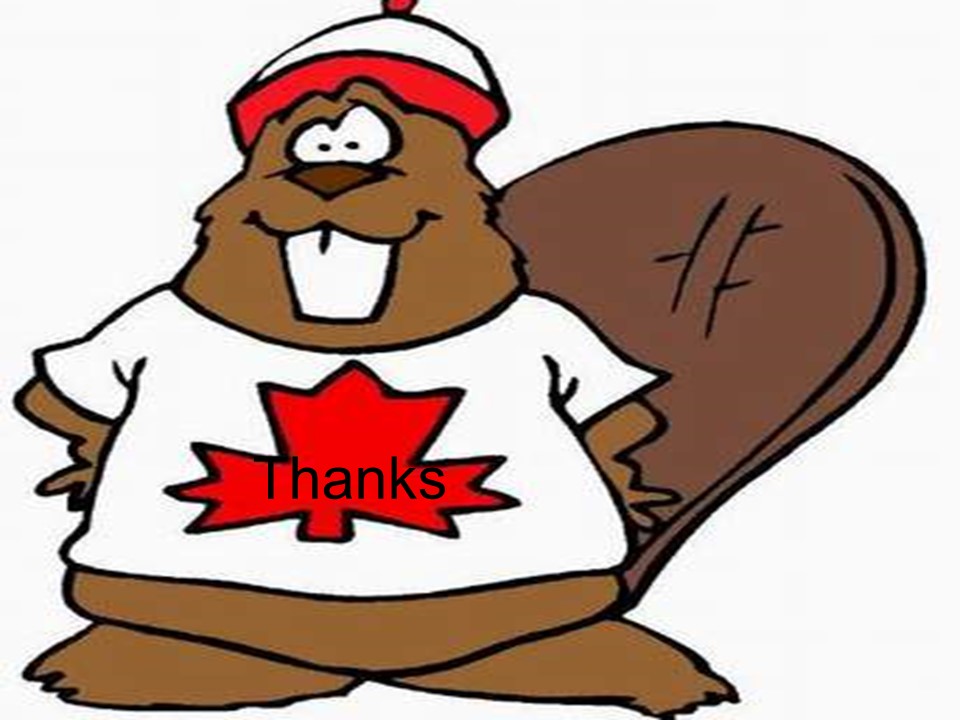
|